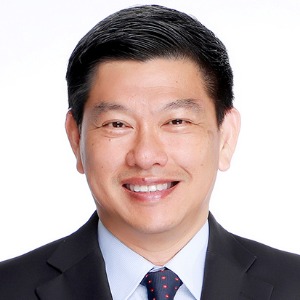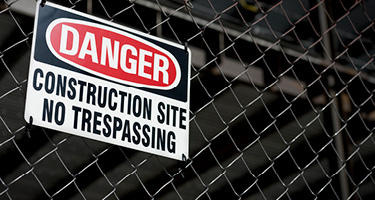In Far East Square Pte Ltd v Yau Lee Construction (Singapore) Pte Ltd [2019] SGCA 36 (Far East v Yau Lee), the Singapore Court of Appeal recently dealt with important issues surrounding the scheme of the Building and Construction Industry Security of Payments Act (CAP 30B, 2006 Rev. Ed.) (the SOPA) and the interplay between the SOPA, the SIA Conditions of Contract and the role of the architect in issuing payment certificates in the SIA Form of Contract.
In Far East v Yau Lee, the Singapore Court of Appeal held that under the SIA Conditions of Contract, a contractor can no longer make any further payment claims under the SOPA after the architect has validly issued the final certificate under the contract (the Final Certificate). This article examines the decision of Far East v Yau Lee and explores whether the Court of Appeal had made inroads into earlier decisions of the Singapore High Court relating to the “dual-track regime for construction claims.”
Background Facts: Far East v Yau Lee
The facts of Far East v Yau Lee are relatively straightforward. The appellant, a developer of an integrated commercial and residential development at Yio Chu Kang / Seletar Road (the Project), Far East Pte Ltd (Far East), engaged the respondent, Yau Lee Construction (Singapore) Pte Ltd, as the main contractor for the Project (Yau Lee). Yau Lee’s engagement was pursuant to a letter of award dated 29 November 2010, which incorporated the SIA Conditions of Contract (the SIA Conditions).
Clause 31(11) of the SIA Conditions provided for the contractor to submit its final claim to the architect of the project before the end of the maintenance period. The Project’s maintenance period ended on 5 August 2015. In spite of the end of the maintenance period, the Yau Lee had submitted 18 payment claims between 6 November 2015 and 23 July 2017 and the architect had issued interim certificates in respect of the aforesaid payment claims.
On 4 August 2017, the architect issued the maintenance certificate, certifying that all outstanding works had been made good or taken into account (the Maintenance Certificate). On 23 August 2017, Yau Lee submitted payment claim number 73 (PC 73). In response, the architect issued a letter described as the final certificate certifying the balance payable from Far East to Yau Lee and Far East issued payment response number 73 shortly thereafter.
On 24 August 2017, Yau Lee submitted a further payment claim, payment claim number 74 (PC 74) to which Far East did not issue a payment response. The architect instead wrote to inform Yau Lee that since the final payment claim had to be submitted before the end of the maintenance period and Yau Lee had failed to do so, it had proceeded to issue the Final Certificate within three months from the issue of the Maintenance Certificate in accordance with cl 31(12)(a) of the SIA Conditions.
On 24 November 2017, Yau Lee submitted a further payment claim on 24 November 2017; payment claim number 75 (PC 75). PC 75 was exactly the same as PC 74 and similar in material aspects to PC 73. Far East never submitted a payment response to PC 75.
Yau Lee lodged an adjudication application in relation to PC 75 on 27 December 2017. On 14 February 2018, the adjudicator issued adjudication determination (the AD) finding Far East liable to pay Yau Lee the sum of S$2,276,284.68.
Yau Lee subsequently filed an application to enforce the AD whereas Far East filed a cross-application to set the AD aside.
The High Court initially granted an order of court enforcing the AD and dismissed Far East’s application to set the AD aside. However, the Court of Appeal subsequently overruled the High Court’s decision and set aside the AD.
Before both courts, Far East argued (at [20]), amongst other things, that “the SIA Conditions of Contract provides for the entire certification process to come to an end with the issuance of the Final Certificate. Since PC 75 was issued after the Final Certificate, it is necessarily invalid and the [AD] that arose from PC 75 must necessarily be set aside.”
Far East also argued that the no estoppel could arise from its failure to file a payment response since PC 75 fell outside the ambit of the SOPA.
Finally, Far East also contended that the issuance of payment claim which fell outside the SOPA constitutes a “patent error.”
No further payment claims after the Final Certificate under the SIA Conditions
The first issue that the Court of Appeal decided was whether a contractor could submit a valid payment claim under the SOPA after the Final Certificate had been issued by the architect under the SIA Conditions.
The Court of Appeal unreservedly held that PC 75, being a payment claim issued after the Final Certificate had been issued, fell outside the ambit of the SOPA and was incapable of supporting the AD. It held that commencing an adjudication on such a payment claim would be equivalent in effect to commencing an adjudication in the absence of a payment claim (at [67]).
In so doing, the Court of Appeal made the following observations:-
- At [31], the Court of Appeal stated that “the SOPA was not meant to alter the substantive rights of the parties under the contract, neither was it intended to give rise to a payment regime independent of the contract. In order to claim for progress payments under the SOPA, it is imperative for the contractor to first establish that he is entitled to such payment under the contract. It follows that in order to determine a contractor’s entitlement to submit payment claims under the SOPA, the court must necessarily have regard to the provisions of the underlying construction contract.”
- Upon issuance of a valid Final Certificate under the contract, he becomes functus officio, and the entire certification process under the construction contract comes to an end (at [39]). “Once the role of the architect under the contract has come to an end, there is simply no basis to submit further payment claims. As it is undeniable that the architect’s certificate is a “condition precedent” to the contractor’s right to receive payment, the contractor would no longer be able to receive progress payments once the architect loses his capacity to issue such certificates. Hence, any payment claim that is issued after the architect is functus officio would be incapable of being certified by the architect so as to entitle the contractor to progress claims under the SOPA.”
- Crucially, the Court of Appeal also observed that “a contractor should endeavour to put in its final claim documents before the end of the maintenance period, or seek an extension from the architect if it is unable to do so.”
Furthermore, the Court of Appeal also cited policy reasons in support of its decision as to why the issuance of a Final Certificate under the SIA Conditions had such a draconian consequence of precluding the contractor from making further payment claims.
Yau Lee had submitted to the Court Of Appeal that any provision in the SIA Conditions which precluded the submission of further payment claims after the issuance of the final certificate would be inoperative as it would be regarded as “excluding, modifying, restricting or prejudicing the operation” of the SOPA pursuant to ss 36(1) and (2), the Court of Appeal.
In response, the Court of Appeal stated that “the payment certification mechanism under the SIA Form of Contract ends with the issuance of the final certificate and thereby prevents further payment claims from being submitted does not offend the purpose and operation of the SOPA as regards ss 36(1) and (2).” The court observed that the concerns pertaining to “cash flow during the course of the project” being the life blood of those in the building and construction industry do not apply to the issuance of the final certificate where construction works have come to an end. At that stage, the risks associated with non-payment would be less likely to threaten the delivery and completion of the works. The Court of Appeal observed at [52]:
“… given that no further works will be carried out after the final certificate is issued, there ceases to be any basis for the contractor to make further progress claims.”
No duty to respond where the payment claim falls outside the ambit of SOPA
The Court of Appeal also held that where a payment claim falls outside the ambit of the SOPA, there is no duty for a respondent to file a payment response.
In the earlier decision of Audi Construction Pte Ltd v Kian Hiap Construction Pte Ltd [2018] 1 SLR 317 (Audi Construction), the Court of Appeal had held that s 15(3)(a) of the SOPA requires a respondent to raise any jurisdictional objections it may have in its payment response. A breach of such a “duty to speak” may give rise to an estoppel in favour of the contractor.
The Court of Appeal in Far East v Yau Lee clarified that such a “duty to speak” does not arise in the context of a payment claim which falls completely outside the ambit of the SOPA and correspondingly, there is no requirement to raise a jurisdictional objection to such payment claims.
The Court of Appeal cited several (non-exhaustive) examples of such payment claims, which included:-
- payment claims made pursuant to oral contracts (s 4(1) of the SOPA);
- payment claims made pursuant to contracts for the carrying out of construction works, or the supply of good and services in relation to any residential properties (s 4(2)(a) of the SOPA);
- payment claims made pursuant to contracts which contains provisions under which a party undertakes to carry out construction works or supply goods and services, as an employee of the party for whom the construction work is to be carried out, or the goods and services supplied (s 4(2)(b)(i) of the SOPA);
- payment claims made in respect of construction projects outside Singapore (s 4(2)(b)(ii) of the SOPA);
- payment claims made pursuant to non-construction contracts, or contracts for the supply of goods and services, within the meaning of s 3 of the SOPA; and
- payment claims submitted beyond the six-year limitation period as set out in s 10(4) of the SOPA.
Payment claims which fall outside the ambit of SOPA constitutes a patent error on the face of the material
Finally, the Court of Appeal also definitively held (at [75]) that the submission of a payment claim after the issuance of a Final Certificate would definitely constitute a “patent error” as most recently defined in the Court of Appeal decision of Comfort Management Pte Ltd v OGSP Engineering Pte Ltd [2018] 1 SLR 979 (Comfort Management). Therefore, any payment claims submitted after the Final Certificate would fall outside the ambit of the SOPA.
Analysis of the Decision
The Court of Appeal’s decision in Far East v Yau Lee is important to all stakeholders in the construction industry, given that the SIA Conditions are such a prevalent form amongst contractors and employers alike. Prudent contractors would do well to ensure that they submit their payment claims well before an architect issues its final certificate. If a contractor wishes to preserve its right to submit a payment claim after the issuance of the final certificate, they would do well to include an express provision to do so. For employers, they may wish to keep a tighter rein on contract administration and ensure that the architect issues their final certificate timeously in order to avoid being hit by an adjudication application long after construction works have been completed.
The Significance of Far East v Lau Yee: What about the dual-track system of payments?
Quite clearly, the Far East v Lau Yee decision has significant implications for all contractors where some sort of final certificate is to be issued. This decision also affects one of the fundamental tenets of the statutory adjudication regime: the dual-track system for payment of progress claims under a construction contract.
There is a line of authority from the High Court of Singapore which states that the framework of the SOPA is to establish a dual system for the payment of progress claims under a construction contract. In Tienrui Design & Construction Pte Ltd v G & Y Trading and Manufacturing Pte Ltd [2015] 5 SLR 852 at [30], the High Court observed that:
“Under the SOP Act, a party who carries out any construction work or supplies any goods or services under a construction contract is entitled to progress payments (s 5). While that statutory entitlement to payment is founded on the underlying contract, it is separate and distinct from a party’s contractual entitlement to be paid. The result is a “dual railroad track system” consisting of the statutory regime under the [SOP Act] which operates concurrently with, but is quite distinct from, the contractual regime…”
In this regard, the SOPA seeks to ensure that a contractor is entitled to receive a progress payment by granting a statutory entitlement to receive payment in accordance with the statutory framework of the SOPA. However, it is important to note that the SOPA does this without seeking to alter the existing rights of the parties under the construction contract for which they have negotiated (as noted by the Court of Appeal in Far East v Lau Yee at [31]).
This “dual-track approach” was most recently affirmed by the Singapore High Court in CHL Construction Pte Ltd v Yangguan Group Pte Ltd [2016] SGHC 62 (CHL Construction) and Sunrsay Woodcraft Construction Pte Ltd v Like Building Materials (S) Pte Ltd [2019] 3 SLR 285 (Sunray). In CHL Construction at [18] and Sunray at [55], the High Court observed that the SOPA allows for a dual track regime whereby a claimant can make separate claims under a construction contract between the parties and under the SOPA, or make a claim that has both contractual and statutory force.
However, a significant inroad into the “dual-track” approach seems to have been made by the Court of Appeal in Far East v Yau Lee. In this regard, the Court of Appeal observed at [30] and [31] that:-
“… the SOPA is merely a legislative framework to expedite the process by which a contractor may receive payment through the payment certification/adjudication process in lieu of commencing arbitral or legal proceedings. It does not, in and of itself, grant the contractor a right to be paid. The right of a contractor to be paid ultimately stems from the construction contract; pursuant to which construction works are carried out. Indeed, a “progress payment” is defined in s 2 of the SOPA as “a payment to which a person is entitled for the carrying out of construction work, or the supply of goods or services, under a contract” [emphasis added]
… In our judgment, the SOPA was not meant to alter the substantive rights of the parties under the contract, neither was it intended to give rise to a payment regime independent of the contract. In order to claim for progress payments under the SOPA, it is imperative for the contractor to first establish that he is entitled to such payment under the contract. It follows that in order to determine a contractor’s entitlement to submit payment claims under the SOPA, the court must necessarily have regard to the provisions of the underlying construction contract.”
In light of the Court of Appeal’s comments above, it now appears that a contractor no longer has a statutory entitlement to a progress payment for construction works under the SOPA. Instead, it is contingent on the provisions of the underlying construction contract. Accordingly, a well-worded provision in a construction contract may be able to completely deprive the contractor of his statutory entitlement to progress payments under the SOPA (subject to the operation of section 36(1) and (2) of the SOPA).
Does this undermine the “dual-track” approach? Even after the final certificate is issued, the employer can still issue its own payment response (although it may not have to in light of the Far East v Yau Lee). This is no different from the current state of the SIA Conditions where it contemplates this very scenario save that the Architect can still issue its Interim Certificate which shall stand as the payment response if none is issued by the Employer. Indeed, the SIA Conditions strives to live alongside the SOPA, and not displace it (if at all possible).
To recapitulate, the Court of Appeal observed that the rationale behind expedited payments under the SOPA ceases to apply in the case of final payment claims. This is because the SOPA was enacted to facilitate cash flow of the contractor during the course of the project, and not long after. This is entirely understandable.
Indeed, the Court of Appeal may have been mindful that payment claims issued long after the project has been completed may amount to ambush and/or an abuse of process – in Admin Construction v Vivaldi [2013] 3 SLR 609 (Admin Construction), the High Court observed that a payment claim served well after the works had been completed may well be an ‘ambush’ by the contractor and amount to an abuse of process. To this end, the amendments to the SOPA which have been passed on 2 October 2018 (but are not in force yet) dealt with this very issue by imposing a 30-month limitation period from the conclusion of the construction project.
That said, has the Court of Appeal in Far East v Lau Yee undermined the “dual-track” approach by its decision? How does this affect a claimant contractors’ cash-flow when they no longer have SOPA remedies and have to litigate or arbitrate because a final certificate has been issued? The lifeblood of the industry is not project-specific for a contractor and a substantial overdue payment for one large project can affect its cash-flow for its other projects.
Finally and in light of the Court of Appeal’s comments in Far East v Yau Lee at [30] and [31], what happens when the construction contract is subsequently terminated, rescinded or avoided? Given that the underlying construction contract may no longer be subsisting and in light of the Court of Appeal’s ruling in Far East v Yau Lee, would the contractor still be entitled to submit payment claims under the SOPA? Section 4(2A)(b) of the new amendments to the SOPA deals with these issues by clarifying that claims for construction work done after the termination of a contract do not fall within the ambit of the SOPA. In the meantime, it may take another decision on the SOPA to deal with such issues before the amendments come into force.






























